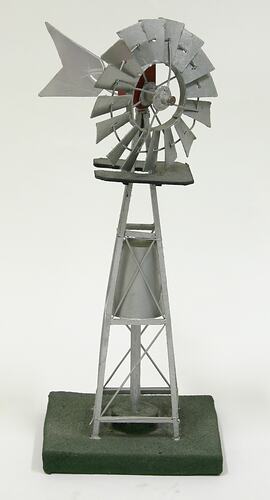When he was a little boy of six William (Bill) McCook received his first catalogue on windmills which sparked a life-long passion. Throughout his life, Bill McCook collected more than a thousand catalogues from countries around the world, plus a wide range of books, articles and memorabilia, relating to windmills. He established a strong reputation for his knowledge of different types of windmills and their history, bringing together the research he'd done over the years in a privately published book entitled "Windmills of the World". Before his death at the age of 69, in 1994, he arranged for the majority of his extensive collection to be donated to Museum Victoria.
A large proportion of the collection consists of trade literature but it also features photographs, archival material, books, memorabilia, hand-made models, and includes some unusual and rare items. Windmills have played a significant role in the history of agriculture and colonisation in Australia and - as machines which harness wind energy to pump ground water - they are also important for its future. Local windmill manufacturers have been closely linked with those in other countries and many windmills used in Australia were imported. The McCook Collection documents contact made over a 60 year period with most of the major windmill manufacturers in the world. In order to build his collection, Bill McCook also established overseas links with booksellers, libraries, museums and other collectors and enthusiasts.
The Bill McCook Windmill Collection is very comprehensive and illustrates Australian and international developments in windmills during the 20th century. It is one of the most significant reference collections for the history of windmills in the world. The collection consists of over 1,000 items of trade literature, over 800 photographs, archival material, blueprints, advertisements, postcards, books, memorabilia and hand-made models.
Some of the catalogues and technical manuals are unusual and rare. The advertising material includes novelty items such as, a series of 1921 images of Aermotor windmills designed to be viewed through 3-D glasses, a beautiful full-colour fold-out advertising card dating from the 1880s, featuring floral motifs and swallows perching on a Perkins windmill, and an old metal ruler painted yellow and red promoting Alston windmills. Other visually and socially interesting material can be found in the wide range of photos of Australian and American windmills, including photos of mid-Western pioneer families in front of the implements which gave their farms essential water.
More Information
-
Keywords
-
Authors
-
Article types
